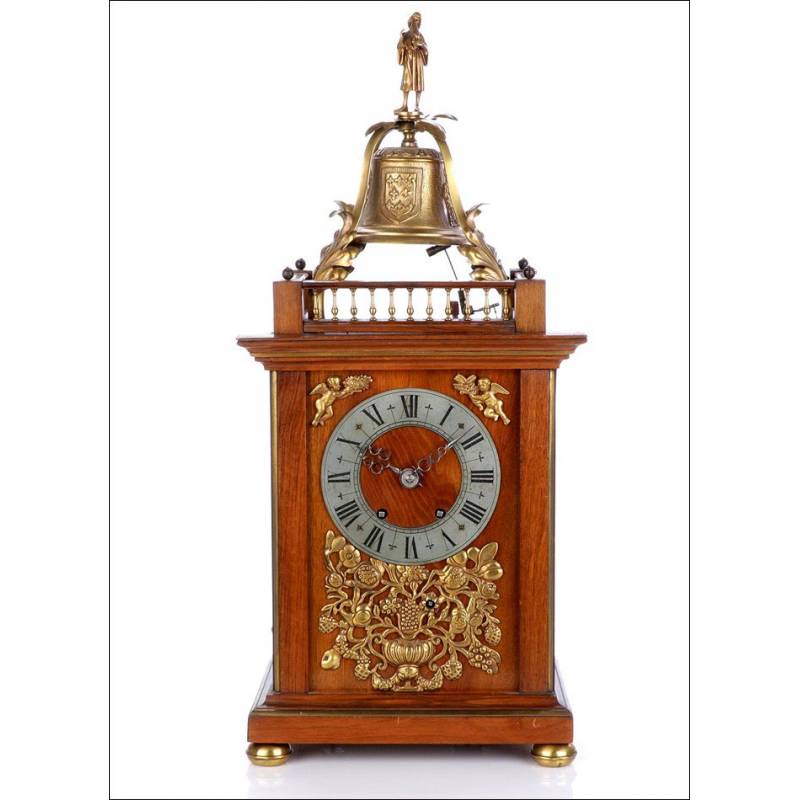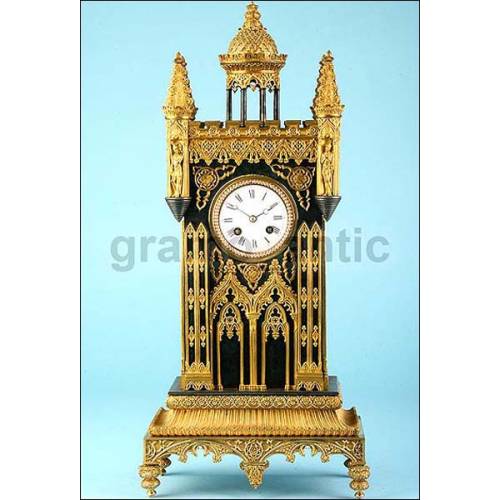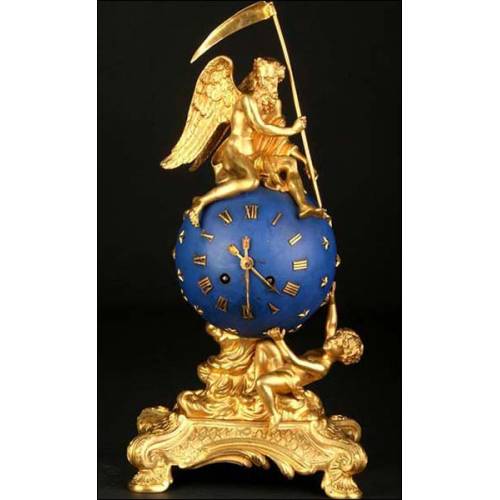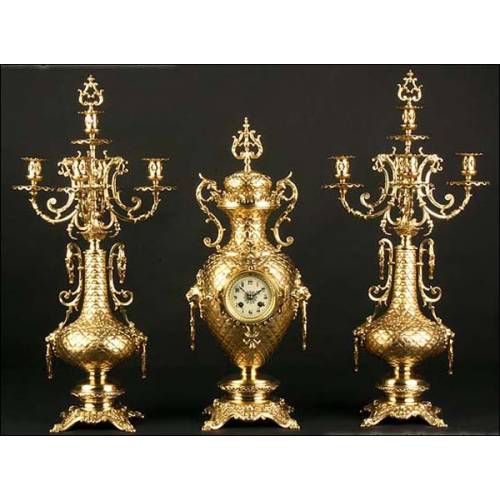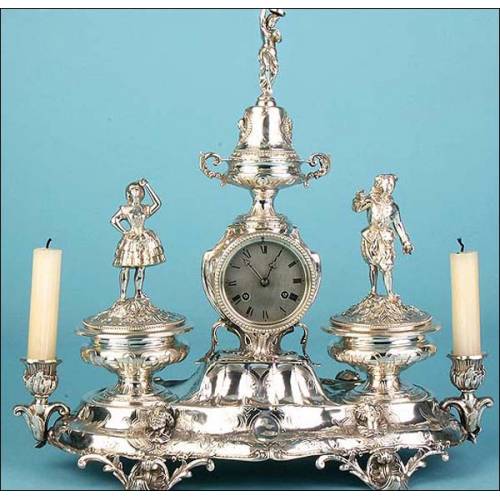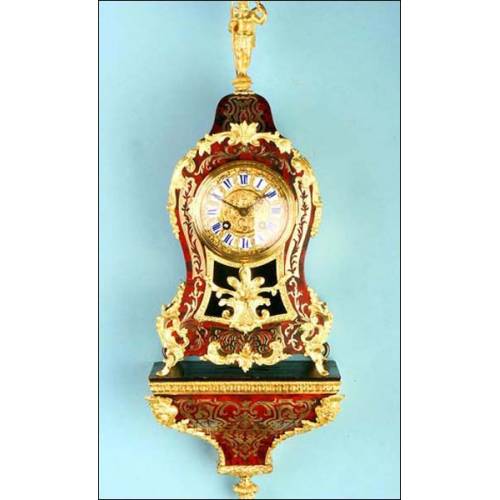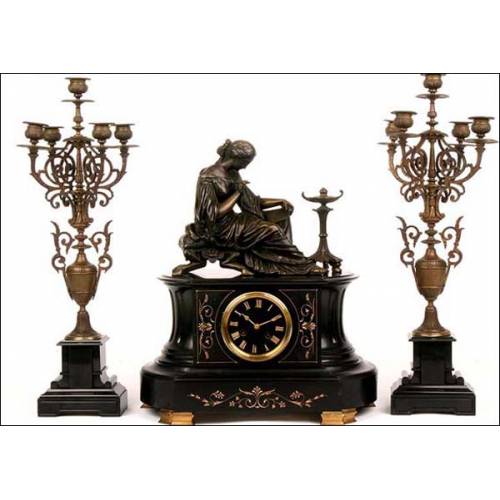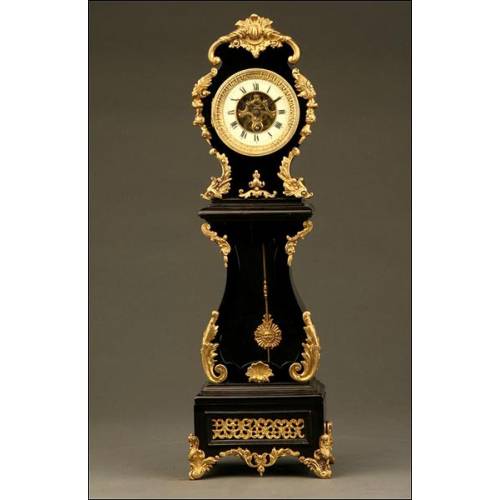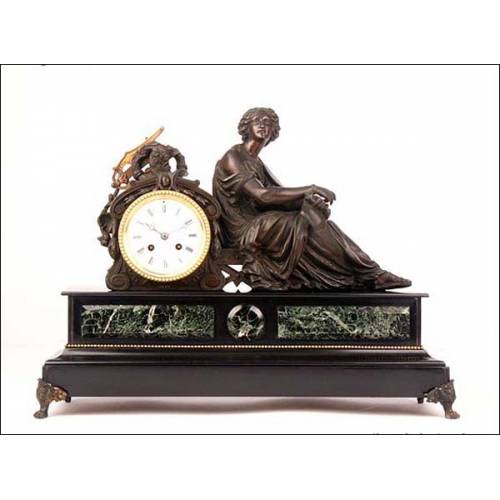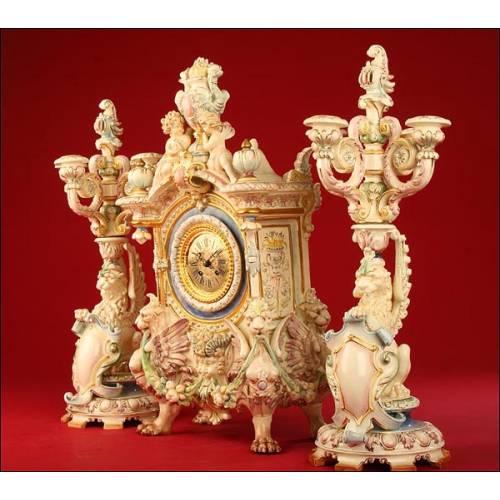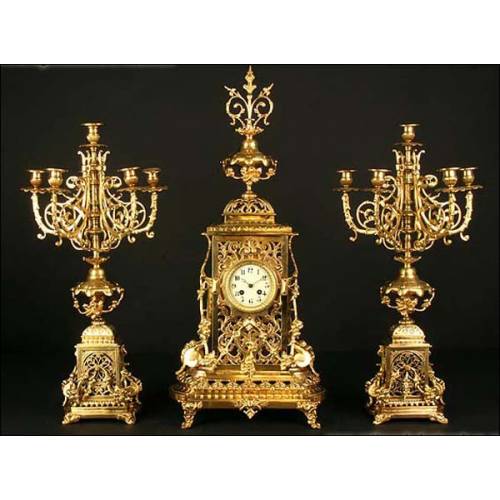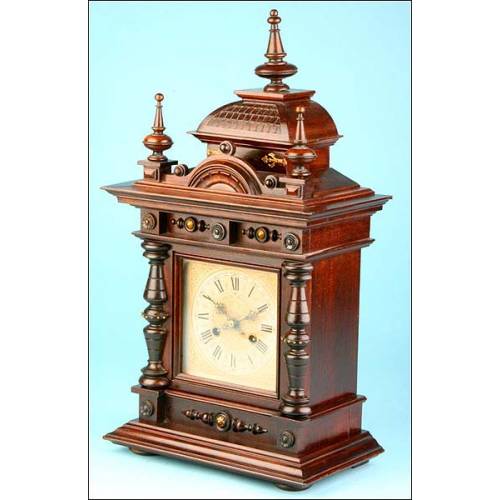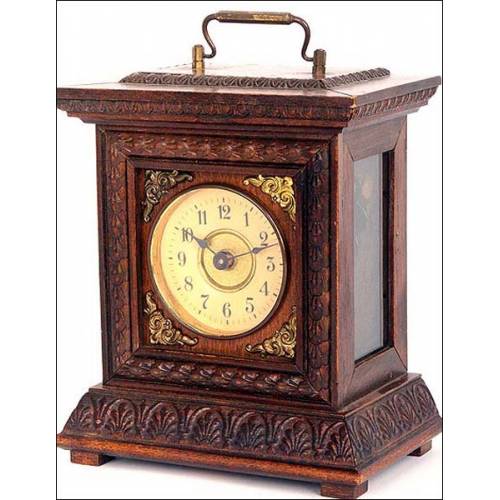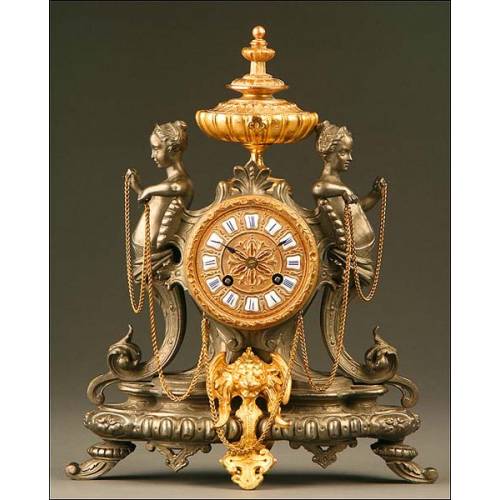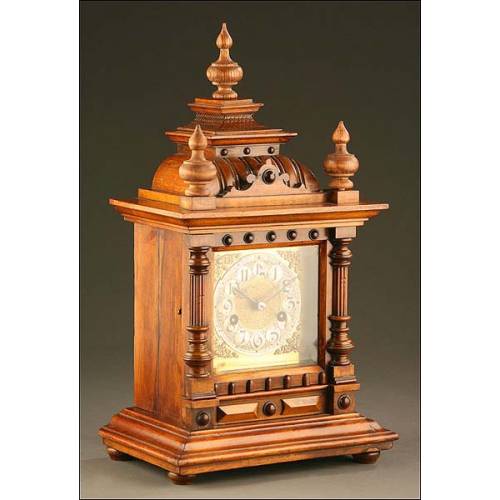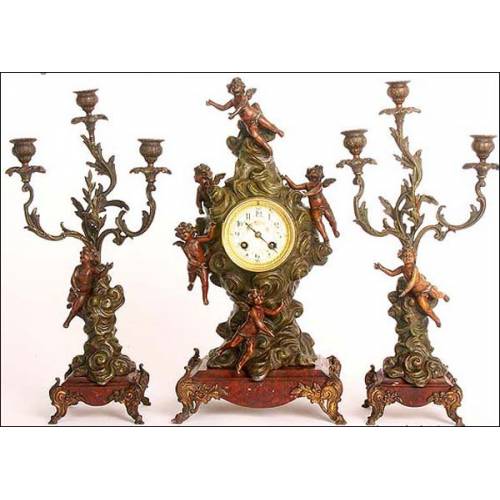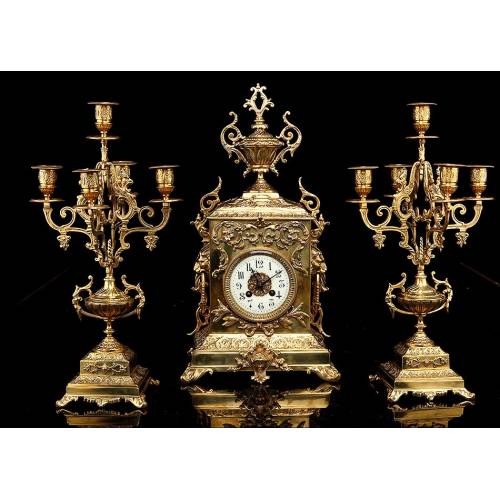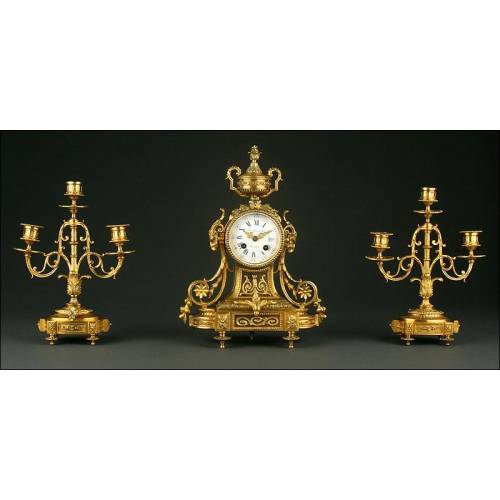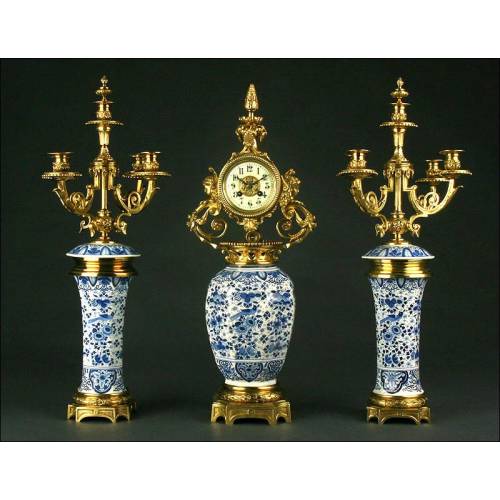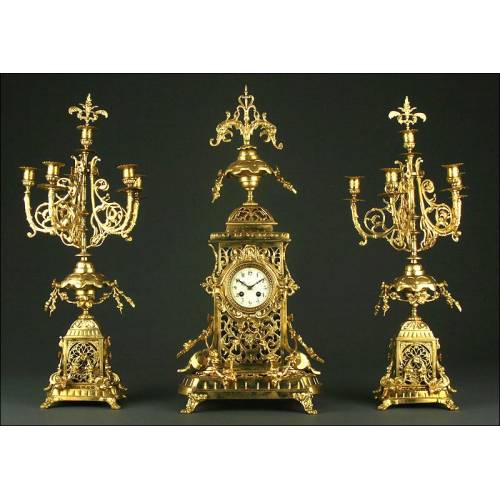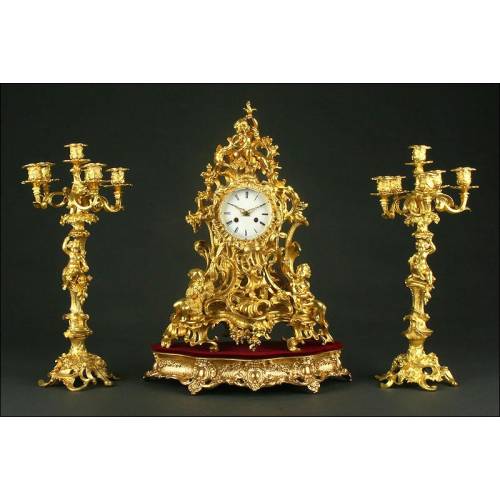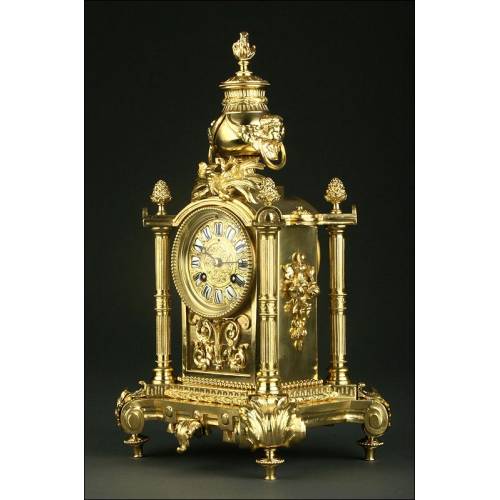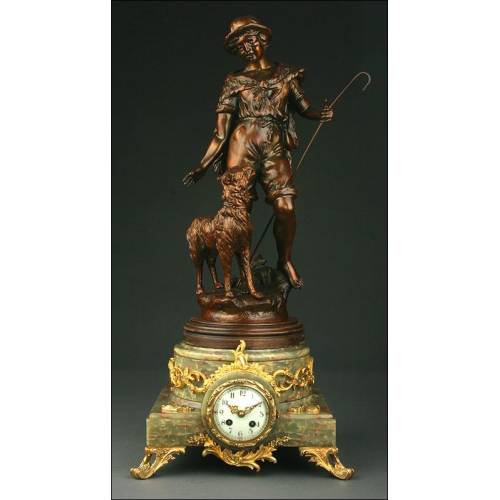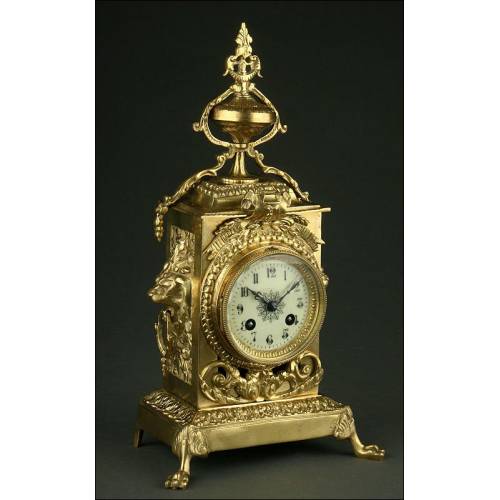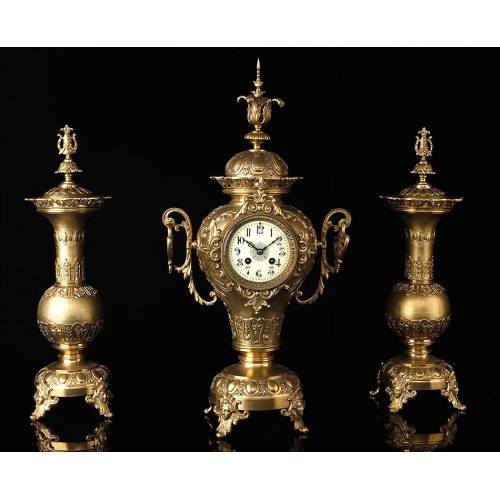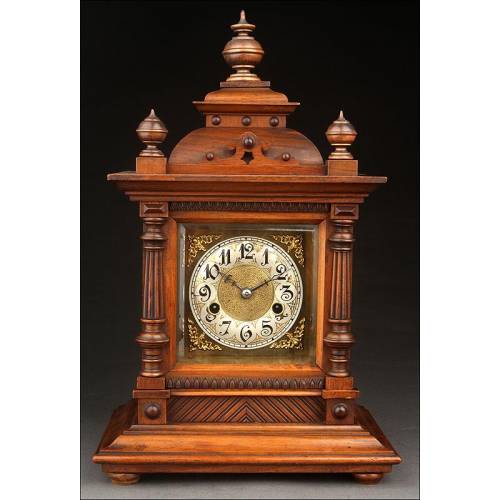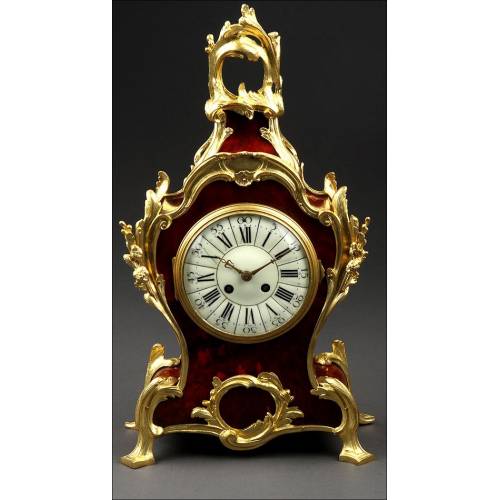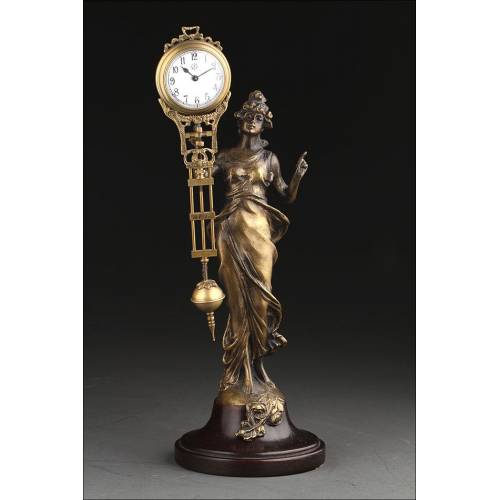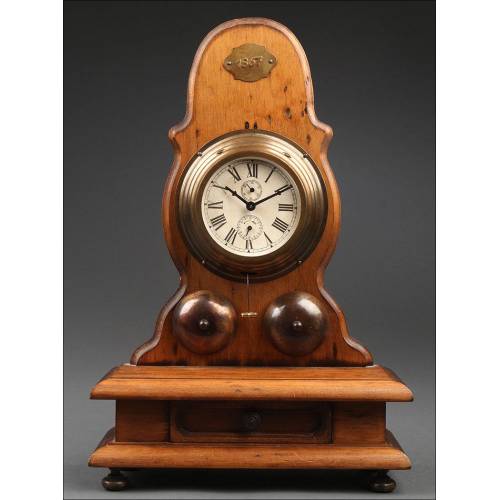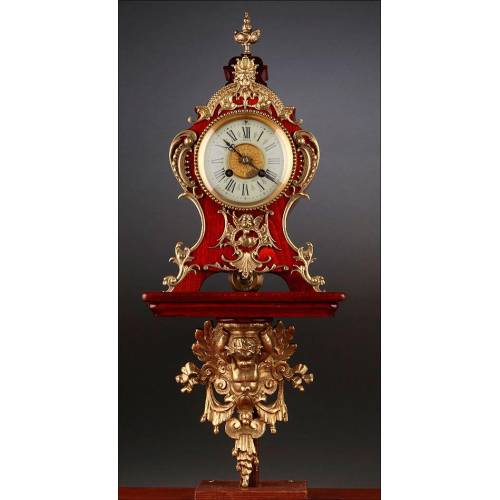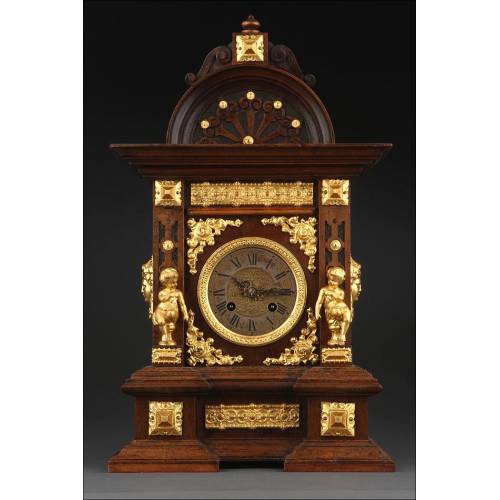C-478
Mathieu Planchon antique clock with chime. France, Circa 1880
Very elegant Mathieu Planchon antique clock. Quarter chime. It strikes the hours and half hours on the bell. Very rare interior machinery.
Sold!
Awesome antique mantel clock signed by the famous clockmaker and automat builder Mathieu Planchon. This gorgeous French clock is dated circa 1880 and remains in excellent condition. It works really fine too. The movement is signed by Vincent & Cie and is a true rarity: it chimes the hours and the halves on the top which crowns the box and chimes the quarters with a delicate cathedral-like tune. The clocks box and movement have been carefully fine-tuned in order to guarantee a fine look and an excellent working order. The box is made of solid mahogany wood with a lovely French-polish finish. It shows off an architectural style, with brass ball legs and top wooden balustrade. The metal dial bears black Roman numerals and silvery Louis-XV hands. The dial is surrounded by decorative brass details depicting a vase with flowers and two cherubs holding bouquets of flowers. The wooden box is crowned by the majestic brass bell which chimes the hours and the halves, adorned with a top figure depicting a young man dressed in classic clothes and with a bird on his hand. Inside the box, the movement is signed by PLANCHON A PARIS and bears the number 6389 engraved in the metal body. We can also see the Vincent & Cie mark. The clock mounts two side levers: one silences the musical chimes, and the other serves to chime the tune whenever the user wants to. As rare as attractive, this amazing mantel clock by Mathieu Planchon is a real collector piece full of charm and quality. Measurements: Width: Ancho: 12.2 in / 31 cm. Boxs Height: 16.14 in / 42 cm. Total Height: 28.34 in / 71 cm. Depth: 9.45 in / 24 cm.Mathieu Planchon History Mathieu Planchon (1842-1921) was a clockmaker and automat designer and inventor who stood out for his amazing works. Planchon worked between the 19th and 20th century with relevant figures such as Jean Eugene Robert-Houdin, the famous illusionist from those times who before developing his career worked as a clockmaker and automat builder too (not to be confused with Harry Houdini who adopted his name as a homage to the French illusionist). Mathieu Planchon studied the mystery pendulum systems between 1897 and 1889. His works on these clock pendulums were recovered by Maurice Couet who later used these systems in the famous Cartier pendulum clocks.

